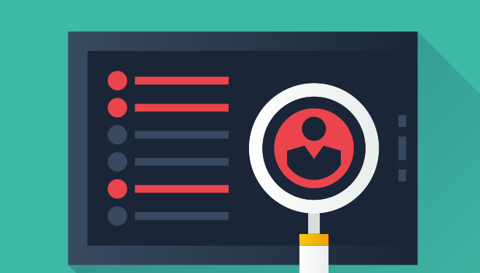Harnessing digital change: moving training services online

Sprinting towards a digital future
In the last few months, we have seen a seismic shift in the way people engage with businesses and organisations. The world is slowly coming to terms with the idea that minimising real-world interaction will be a way of life for the foreseeable future; many businesses are already seeing this translate into a growing demand for online services.
Whilst this behavioural tilt towards digital service delivery has been gaining momentum for some time, the rapid increase in the pace of change that this year’s events have sparked has caught many organisations off-guard.
From traditional to digital is no mean feat
Alongside the retail and hospitality sectors, businesses that are heavily reliant on physical events to deliver services such as training have perhaps been among the worst affected by the ongoing pandemic.
Training programmes often deliver value through provision of in-class mentoring, so the prospect of moving rapidly to remote learning, and doing it at scale, is a scary prospect for even the most progressive of organisations.
Many businesses that operate traditional training models have struggled to adapt. Others have managed to address short-term continuity issues by expediting digital change programmes or patching existing systems.
But it doesn’t just have to be about surviving or meeting current needs. The increasing demand for digital training presents a huge opportunity to diversify and expand - for those brave enough to invest.
The key challenges that must be met
Remote learning has many benefits, but some aspects of training do not translate neatly into the digital space. Simply digitising your training content can often remove crucial elements of the in-class experience, potentially leading to a deterioration of learning outcomes.
To deliver against the evolving expectations of your existing service users and attract new audiences, it’s critical to understand how their perceptions, motivations and behaviours manifest in the digital domain.
For instance, the time and place that people engage with learning material are now under the control of the learner. This could impact the quality of their experience if the material is not designed with multiple devices and contexts in mind.
Issues such as accessibility must also be considered, along with addressing how feedback mechanisms can be built into the learning platform.
It’s important to test assumptions on what aspects of the training learners value the most, and how this value can be maintained in a remote learning environment.
So, what are the fundamental factors that will deliver change successfully?

Invest in discovery
When under pressure to adapt quickly, it can be tempting to avoid external research and rely instead on internal knowledge to guide the launch of digital services.
While it is important to explore what you know about your service users, seeking direct feedback is vital to success, especially when a change in behaviour has already been identified as part of the challenge.
User-centred research allows you to sense-check what aspects of online training will be valued by users and the role they wish you to fulfil. This insight then allows you to define user needs accurately and prioritise the most essential functions of your training programmes early in the roll-out.
For instance:
- Are you already seen as a ‘go-to’ for credible training? If so, how will these perceptions change if delivered as digital product?
- Are there clear and tangible benefits to most users for direct contact? If so, how can these benefits be preserved when delivering digital training?
- What other behaviours and needs should be addressed and how can you play to the strengths of the technology to deliver a better, more personalised learning experience?
These were some of the questions we sought to answer when working with UK Coaching in 2019 to digitise their training offering.
Speaking directly with users revealed that location-based training was often a barrier for some of their members, who found the events challenging to attend due to time and geographic restrictions.
This insight has helped UK Coaching to reach a wider audience through their digital training platform and meant the business could adapt quickly to an increase in demand when the pandemic hit earlier this year.
Make best use of technology
It goes without saying that user insight should inform the solution you choose; but even with a clear picture of their needs, navigating the multitude of technology platforms out there can be an overwhelming task.
Exploring how similar organisations have successfully deployed digital training can often reveal how they have addressed technological challenges and guide you on the platforms that will deliver a better digital experience.
Evaluating the capabilities of your existing technology can also uncover opportunities to reduce cost and speed up the delivery of your solution. What do you have in your stack already that could be used now, or upgraded, to deliver digital training programmes?
Keep adaptability and flexibility front-of-mind when scoping your solution. The platforms you use should integrate well together, offer scalability, and ideally be easily replaceable.

Adopt an agile mindset
Finally, it is important to think of digital change as an evolutionary process, not a project with a fixed endpoint. Taking an iterative approach to the launch of your digital training will build in the capacity for continual improvement while reducing the risk of delays or service interruptions.
Have a clear strategy for the staged delivery of your solution, and prioritise features based on what you have learned about user needs. Browsing training content, engaging with digital courses and paying for training online can be delivered as iterative stages of development; with data collected on the delivery of each.
Involve your key stakeholders throughout the process, not just as at the sign-off stage: they will be more invested in the project and can help make the delivery smoother (providing views and decisions are supported with user insight).
For instance, by evidencing user need and presenting a defined strategy for delivery that mitigated commercial risk, we helped the UK Coaching digital team to secure senior stakeholder support for the project.
An agile methodology will also allow you to prepare for the unexpected. In this turbulent environment, it is important to safeguard your ability to pivot when user behaviours or expectations change.
Investment in change will be the key to survival
Despite the current crisis, the investment that UK Coaching has placed over the last 18 months in offering digital training solutions has led to greater business resilience, an increase in service demand and diversification of their audiences.
With an ever-present uncertainty surrounding the months to come, it will be important for businesses to continue seeking alternative models of service delivery, rather than waiting for the clouds to part.
Those that place value in a user-led approach and adapt their services to changing behaviour will be the organisations that continue to thrive.